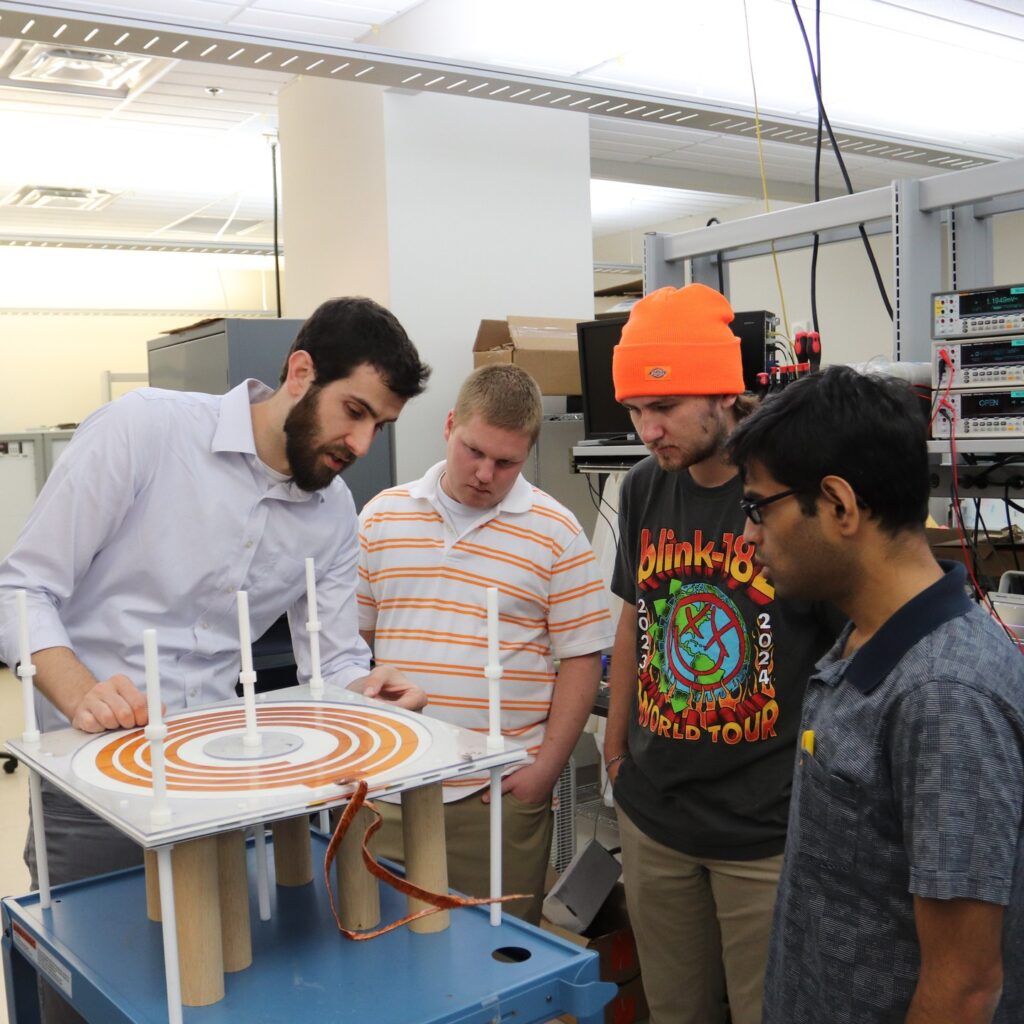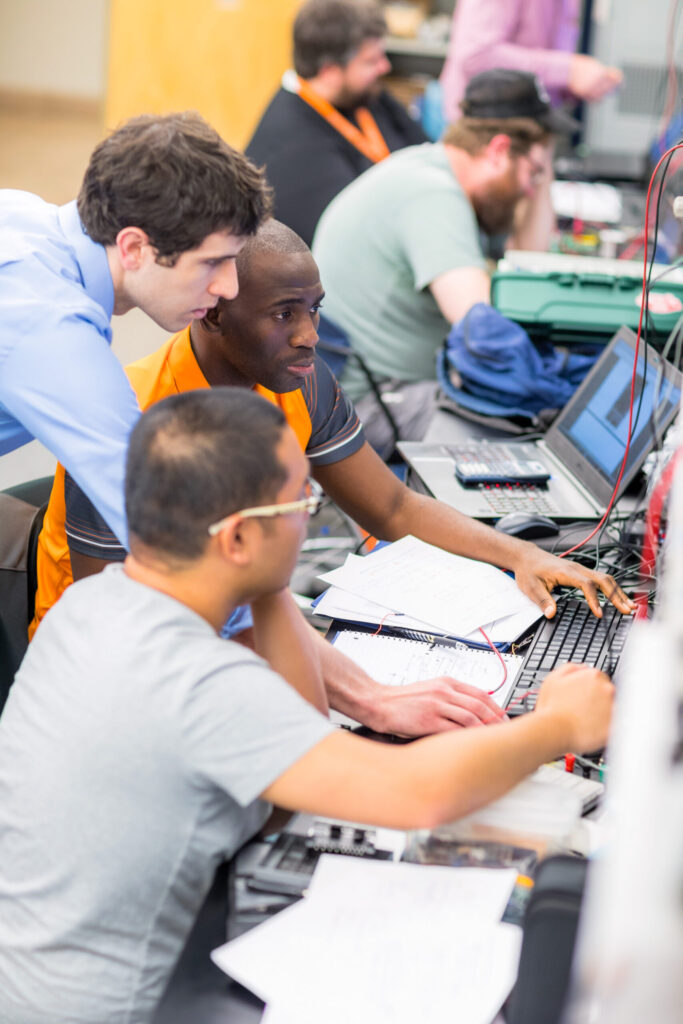
A University of Tennessee professor and Associate Department Head in the Department of Electrical Engineering and Computer Science is reshaping one of the most fundamental components of wireless power transfer: the coil.
Daniel Costinett has spent years researching how to transmit power wirelessly in an efficient and cost-effective way. His team’s breakthrough—a novel resonant coil structure—significantly improves efficiency, cost, and size. With support from UTRF, this work has led to multiple issued patents and has attracted significant industry attention.
A Coil That Could Power the Future
Wireless charging isn’t new—it’s already used in consumer electronic devices like smartphones and electric toothbrushes. It relies on electromagnetic fields created by coiled wires—usually copper—to transfer power between a transmitter and a receiver. But Costinett and his team have reimagined the structure of those coils.

“We developed a new way to design that coil,” he explained. “Usually, it needs that coil plus some additional components to make it work well, and we found a way to integrate all those components into one structure.”
The result? A wireless power transfer system that’s thinner, lighter, cheaper, and more efficient than current designs. These traits are crucial not only for consumer electronics, where manufacturing cost is at a premium, but also for electric vehicles, where weight and size directly impact range and performance.
This resonant coil system requires control over both the transmitter and the receiver for maximum efficiency, meaning it will not work with other charging systems. “It doesn’t conform to the current standards,” Costinett noted, “because we’re doing things differently in order to improve performance.”
From Concept to Commercialization
The journey from academic research to real-world application was jumpstarted by a UTRF maturation grant.
“The maturation grant gave us a little bit of funding to keep looking into these coil designs and come up with something,” said Costinett. That support allowed his team to build and test prototypes—not only for consumer electronics, but later for electric vehicle (EV) charging systems as well.
Their EV charger demonstration, published in a peer-reviewed paper, showcased the highest power density recorded under comparable technical constraints.
Looking Ahead
After laying the groundwork for the patented coil design, Costinett worked with UTRF Technology Manager Gregory Sechrist to license the technology to Alabama-based startup Watson Electronics.

“Costinett is very good at communicating what makes his innovations different, where they are in the development process, and what areas they would work best in. That practicality makes him very easy to work with,” said Sechrist.
“Our goal is to get innovations to the marketplace. By working with a startup to further develop this wireless power transfer charging technology, we’re aiming to demonstrate the real-world feasibility of Costinett’s research and its potential across various markets.”
Costinett’s impact extends well beyond this resonant coil innovation. According to UTRF records, during his time at UT he has submitted 17 invention disclosures, been involved in 36 patent applications, holds 13 issued or allowed patents, and has six more pending. His inventions span applications in electrosurgical devices, EV charging, wireless power transfer, and grid interface converters.
He also recently concluded a decade-long leadership role in CURENT, an NSF-funded Engineering Research Center focused on large-scale electric power transmission. Now self-sustaining, the center continues to address the immense technical challenges of modernizing the U.S. power grid.